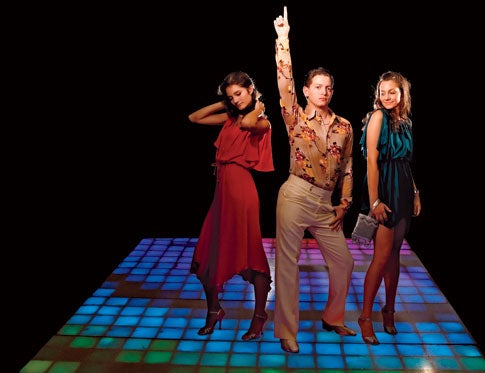How geeks get down
When dance fever hit MIT, students built a computer-controlled, LED-lit disco floor. Now you can, too.

A few semesters ago, a group of undergrads at the Massachusetts Institute of Technology took on a challenge more daunting than classwork: disco. Before a dorm party, they worked night and day for a week to build a computer-controlled, pixelated dance floor out of 1-by-4s, LEDs, tinfoil, paper towels, and old computer parts. The 8-by-16-foot result would make Travolta weep with joy.
- Dept: You Built What?!
- Cost: $5,000
- Time: 1 week
- Difficulty: easy | | | | | hard (Editor’s note: 4/5)
Each of the 512 six-inch-square pixels contains three LEDs pointed down at a square of paper towel that sits in a larger piece of foil. The foil reflects the light up through the plastic floor, while the paper towel mutes its glow. (LEDs stay cool, so the towels won’t ignite.) A computer controls each pixel individually, and the software generates 25 disco-tastic patterns, enabling DJs to match the light show to the music they’re playing.
After earning minor fame at MIT (one of the inventors scored dates because of his uncanny soldering skills), the students began upgrading the floor. Their latest model, for sale at dropoutdesign.com for $450, has a prebuilt circuit board and instructions, so anyone can turn a basement into a discotheque.
How it works
- Lights: By varying the intensity of each bulb, the students can blend light from the red, green and blue LEDs housed in each pixel to produce any color.
- Control: Any internet-connected computer can control the floor, and the open-source software allows code-savvy disco fans to add new light patterns.
- Resilience: With its wooden frame and a quarter-inch-thick layer of Lexan plastic, the floor has proven to
be nearly indestructible.
This story was originally featured in the December 2006 issue of Popular Science magazine.